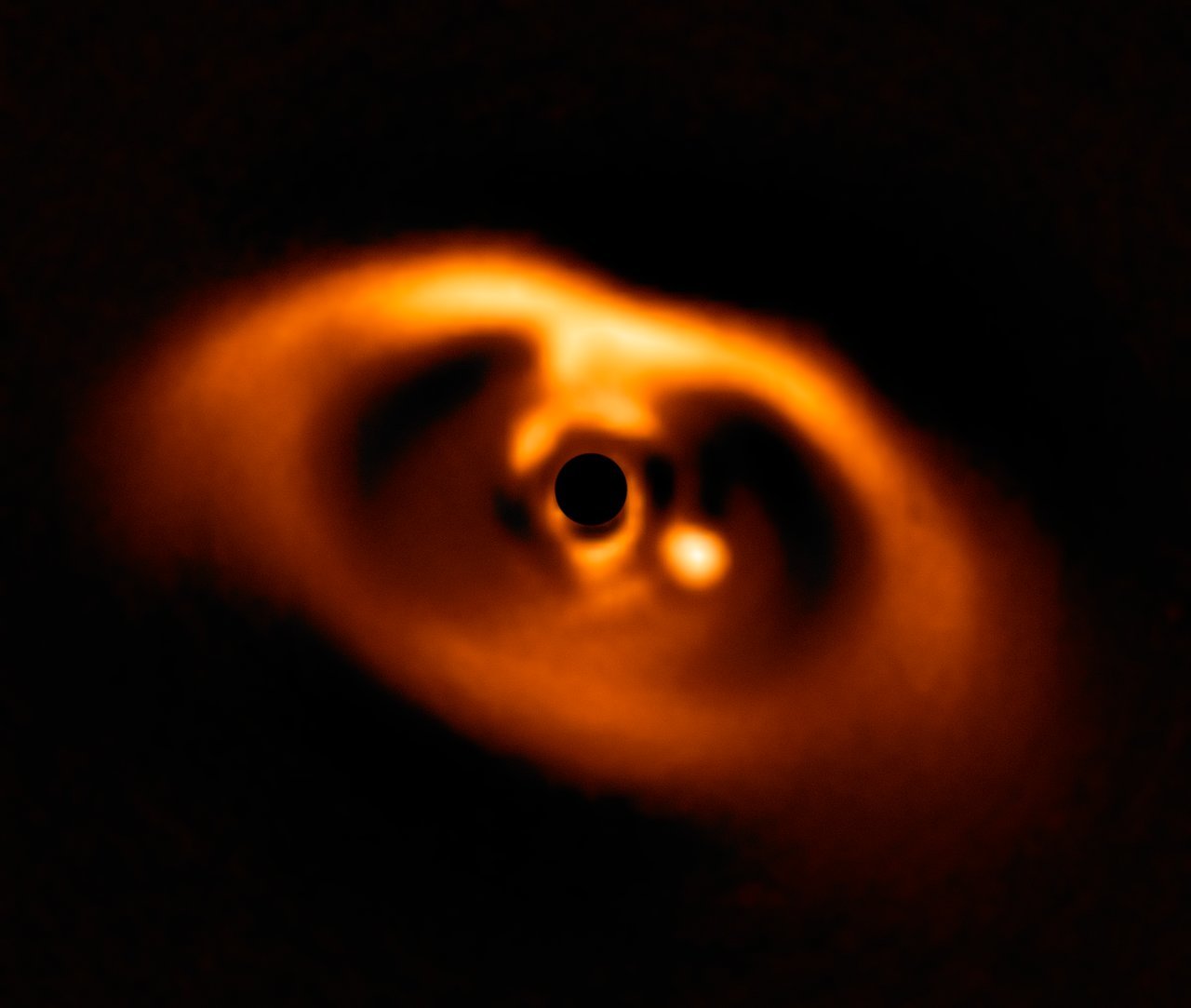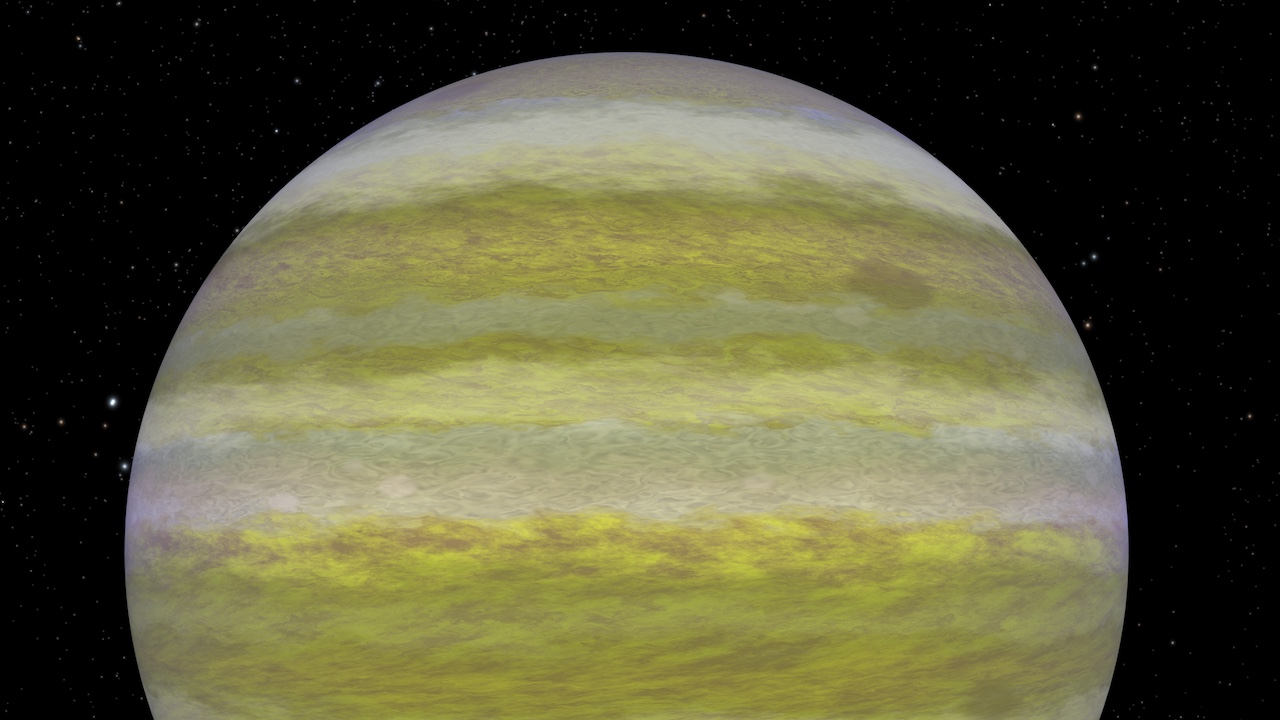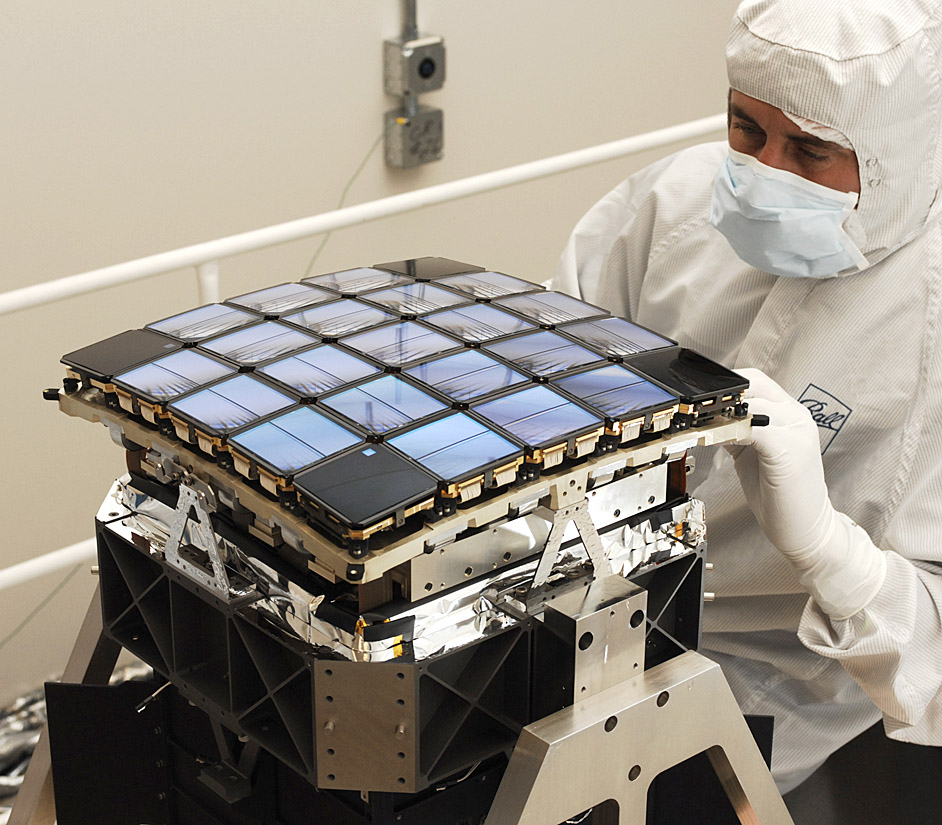2 min read

Planet: PDS 70b
Discovered by: M. Keppler et al. using ESO’s Very Large Telescope
Date: July 2, 2018
Key Facts: Even astronomers aren’t immune to baby photos. Especially if it’s a photo of a baby planet! Astronomers in Germany captured the first clear images of the young planet PDS 70b in the process of formation around its star, PDS 70. The planet stands out, visible as a bright point to the right of the center of the image. The black circle in the center is a part of the telescope called a coronagraph, which blocks the blinding light of the star. If the Very Large Telescope did not have a coronagraph, the star’s glare would drown out the fainter light of the planet, hiding it from our view. Even though it looks tiny, this planet is a gas giant more massive than Jupiter. It’s also very, very hot– about 1800 degrees (1000 degrees Celsius).
What's new: Where do planets come from? We’re just starting to see planets form in large structures of gas and dust called “protoplanetary disks,” which orbit very young stars. What we’re still learning is how tiny specks of dust and gas come together via gravity to form huge planets. In the image above, the bright ring around the young star is its protoplanetary disk. A star and its planets form out of a cloud of dust and gas. As gravity pulls the cloud closer together, it starts to rotate, eventually flattening into a spinning disk. Eventually, the material in the disk will begin to stick together, somewhat like household dust sticking together to form dust bunnies. These dust bunnies sweep up more material until they eventually become planets. Images of newborn planets, like this one, will help us test our theories of how planets are formed.
See details and check the official ESO release at European Southern Observatory







